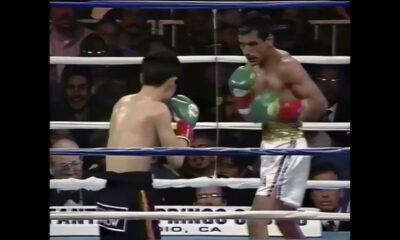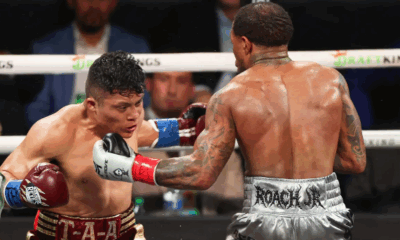Featured Articles
This Day in Boxing History: The Fights That Helped Define November 17
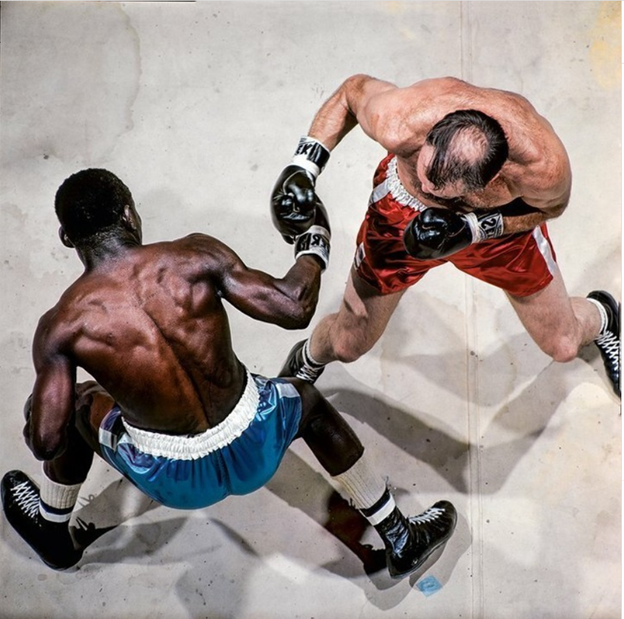
Tucked between history’s infamous boxing dates, are the subtler days that reveal just as much about the sport’s character. November 17 is one of those days: not flashy, not broadly mythologized, but rich with fights that illuminate boxing’s evolution, its shifting eras, and the men who defined them.
The story begins in 1913, when Ed “Gunboat” Smith outpointed the great Sam Langford over twelve rounds in Boston. It was a fight that captured the contradictions of early 20th-century boxing — Langford, arguably the most feared man alive, was still shackled by a color line that prevented him from fighting for the world heavyweight title. Reports from the time suggest Smith started sharply while Langford closed strongly, and opinions at ringside varied on who deserved the nod. The decision went to Smith, but the night remains another chapter in the complicated saga of Langford’s greatness.
Seven years later — same date, different city — Langford returned to recapture November 17 for himself. In 1920, he knocked out George Godfrey in the second round in Hot Springs, Arkansas. Godfrey was a mountainous heavyweight with skills to match his size, but Langford, well past his physical prime, still possessed the timing and menace to end a fight before it truly began. The knockout reinforced his mythic status: the smaller man who outpunched giants, the perennial contender denied a throne he arguably deserved.
By the mid-20th century, November 17 had evolved into a showcase for champions crossing between eras. In 1933, Chicago fans watched the smooth, cerebral Barney Ross defend his super lightweight title with a composed decision over Sammy Fuller. Six years after that, Billy Conn — all grace, footwork, and Pittsburgh steel — outboxed Gus Lesnevich in New York to retain his light heavyweight championship in a fifteen-round clinic. Conn’s style would later become legend when he nearly dethroned Joe Louis as a heavyweight, but the Lesnevich fight showed the polish that made him one of boxing’s most admired craftsmen.
The date continued building its résumé into the postwar years. In 1950, Kid Gavilan edged out Billy Graham in a crowded New York arena — another chapter in a rivalry that defined both men’s careers. Four years later in San Francisco, lightweight champion Jimmy Carter reclaimed his title by stopping Paddy DeMarco in the fifteenth round, a finish that underscored the endurance required in an era when fighters routinely went the championship distance.
And then came the 1960s, when November 17 delivered one of its most memorable performances. In 1967, Dick Tiger — a veteran of long wars, short money, and relentless travel — defended his light heavyweight crown by breaking down Roger Rouse over twelve rounds in Las Vegas (pictured above). Tiger was well into his thirties, but he fought with the authority of a man who understood every inch of the ring. His body work told the story: steady, punishing, and inescapable. When Rouse finally wilted, it felt less like the drama of a single punch than the cumulative inevitability of Tiger’s will. It was one of his final great nights, a champion aging with dignity, precision, and bruising efficiency.
Even the 1970s treated November 17 with respect. In 1971, Muhammad Ali — newly returned to boxing and sharpening himself for the era-defining fights ahead — outclassed Buster Mathis in Houston. Ali was still rediscovering his rhythm, but even at less than peak form, he displayed the nimble brilliance that made him singular. And one year later, at Madison Square Garden, Esteban de Jesus handed the young Roberto Durán a rare defeat in a non-title bout. At the time, it felt like an upset. In hindsight, it was the spark of a rivalry that would stretch across years, divisions, and legacies.
When you thread all these nights together — the controversies, the comebacks, the stylistic contrasts, the generational passing of torches — November 17 emerges as more than just a date. The sport’s evolution is visible in the styles of its champions, the changing social landscape surrounding its fighters, and the shifting importance of titles across decades. Langford’s menace, Conn’s footwork, Tiger’s thudding body blows, Ali’s effortless glide — all shared the same date on the calendar, separated by decades but linked by the timeless rhythm of the bell.
Fun Facts:
Sam “The Boston Tar Baby” Langford was a prolific but under-recognized fighter. He reportedly fought more than 300 professional bouts over a 20+ year career, and not all of his matches were recorded. Despite being only about 5’7″, Langford fought across multiple divisions — from lightweight up through heavyweight — often giving up significant size but still delivering devastating power. According to some accounts, he scored at least 125 knockouts. Because of the color line in boxing at the time, Langford was systematically denied shots at many “official” titles, despite being one of the most feared and talented fighters of his era. Boxing writers like Nat Fleischer ranked him among the hardest punchers of all time, pound-for-pound, despite never being a universally recognized world champion.
Barney Ross, who was born Dov-Ber Rasofsky and also went by Beryl, changed his name in part to assimilate in America. He won world titles at lightweight, junior-welterweight, and welterweight — a rare feat for his era. Across 81 professional fights, Ross was never stopped by knockout — all his losses came via decision. During WWII, Ross served in the U.S. Marine Corps and was awarded a Silver Star for bravery at the Battle of Guadalcanal. After being wounded in the war, he became addicted to morphine; his life inspired the biographical film Monkey on My Back (1957).
Nigerian Dick Tiger (Richard Ihetu) is widely regarded as one of the greatest African boxers ever. He won world titles at middleweight and light heavyweight. During the Biafran War, he reportedly served as a lieutenant in the Biafran army and trained soldiers in hand-to-hand combat. Inside the ring, he was nicknamed “Tiger” for his stalking, methodical style — he was calm, disciplined, and powerful. The only time he was stopped by knockout was by Bob Foster — and that came late in his career, when he was nearly 40. He was posthumously inducted into the New York State Boxing Hall of Fame.
Kid Gavilan (Gerardo González) was the undisputed welterweight champion in the early 1950s — holding multiple belts. One of his early title defenses marked the first time in then-segregated Miami that a black fighter and a white fighter fought professionally in a high profile fight — highlighting boxing’s role in breaking social barriers. He was inducted in the International Boxing Hall of Fame, in the inaugural class of 1990.
Billy Conn (“The Pittsburgh Kid”) is perhaps best remembered for his courageous and tactical bouts against heavyweight legend Joe Louis. Despite being a light heavyweight, he had heavyweight aspirations and fought a heavyweight style — blending speed, footwork, and courage.
Esteban “Vita” de Jesús was the first professional boxer to defeat Roberto Durán, handing the young Roberto Duran the first setback of his professional career. His battles with Durán didn’t just stop at that first upset — they fought two more times, building a legendary rivalry. Esteban went on to become WBC lightweight champion in 1976 after beating Guts Ishimatsu.
-
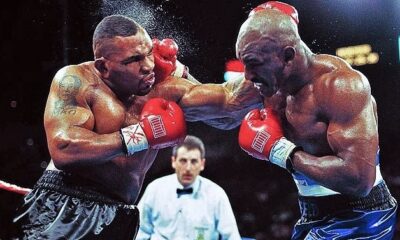
 Featured Articles4 weeks ago
Featured Articles4 weeks agoThis Day in Boxing History: Surprise, Legacy, and Transition
-

 Featured Articles4 weeks ago
Featured Articles4 weeks agoThis Day in Boxing History: Fights that Made November 10th Unforgettable
-

 Featured Articles4 weeks ago
Featured Articles4 weeks agoThis Day in Boxing History: From St. Louis to Buenos Aires
-
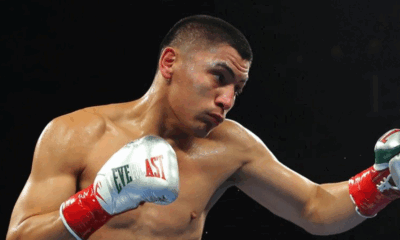
 Featured Articles4 weeks ago
Featured Articles4 weeks agoResults and Recaps from Texas where Vergil Ortiz Demolished Erickson Lubin
-
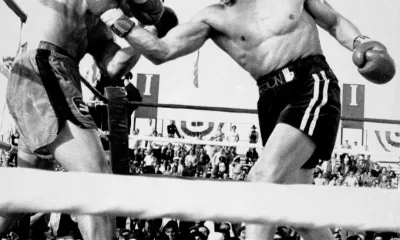
 Featured Articles4 weeks ago
Featured Articles4 weeks agoThis Day in Boxing History: A Date for Heavyweights, Shockwaves and Momentum
-

 Featured Articles4 weeks ago
Featured Articles4 weeks agoBoxing Odds and Ends: The Swedish Alliance and More Fight News
-

 Featured Articles4 weeks ago
Featured Articles4 weeks agoThis Day in Boxing History: Legendary Fights Across Four Decades
-

 Featured Articles2 days ago
Featured Articles2 days agoResults from Australia where Cruiser Champ Jai Opetaia Starched Another Overmatched Foe





